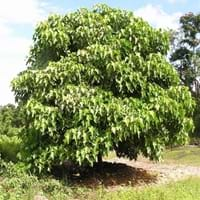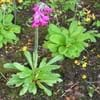Life Span
Perennial
Perennial
Origin
Hybrid origin
Southeastern Asia, Melanesia, Micronesia, Polynesia
Types
Not available
Not Available
Habitat
Damp forests, Woodland Garden
Subtropical climates, Tropical regions
USDA Hardiness Zone
3-8
10-12
Sunset Zone
Not Available
H2, 23, 24
Habit
Rosette/Stemless
Oval or Rounded
Minimum Height
Not Available
Minimum Width
Not Available
Flower Color
Yellow, Red, Purple, Orange
White
Flower Color Modifier
Not Available
Bicolor
Fruit Color
Not Applicable
Light Green, Gray Green
Leaf Color in Spring
Green
Green, Gray Green, Gray
Leaf Color in Summer
Green
Green, Gray Green, Gray
Leaf Color in Fall
Green
Green, Gray Green
Leaf Color in Winter
Light Green
Green
Leaf Shape
Oblong elliptic
Ovate
Plant Season
Summer, Fall
Spring, Summer, Fall, Winter
Sunlight
Full Sun, Partial Sun, Partial shade
Full Sun, Partial Sun
Growth Rate
Medium
Very Fast
Type of Soil
Loam
Loam, Sand
The pH of Soil
Neutral
Acidic, Neutral, Alkaline
Soil Drainage
Average
Well drained
Bloom Time
Summer, Late Summer, Early Fall, Fall
Indeterminate
Tolerances
Drought
Wet Site, Drought, Salt
Where to Plant?
Ground, Pot
Ground
How to Plant?
Divison, Seedlings
Seedlings, Stem Planting
Plant Maintenance
Medium
Medium
Watering Requirements
Do not let dry out between waterings, Keep ground moist, Keep the Soil well drained, Requires regular watering
Average Water Needs, Do Not over Water, Never Over-water, Requires a lot of watering
In Summer
Lots of watering
Lots of watering
In Spring
Moderate
Moderate
In Winter
Average Water
Average Water
Soil pH
Neutral
Acidic, Neutral, Alkaline
Soil Type
Loam
Loam, Sand
Soil Drainage Capacity
Average
Well drained
Sun Exposure
Full Sun, Partial Sun, Partial shade
Full Sun, Partial Sun
Pruning
Remove damaged leaves, Remove dead branches, Remove dead leaves
No pruning needed
Fertilizers
All-Purpose Liquid Fertilizer
All-Purpose Liquid Fertilizer
Pests and Diseases
Dry root rot, Leaf spot
Red blotch
Plant Tolerance
Drought
Drought
Flower Petal Number
Single
Single
Showy Bark
Insignificant
No
Foliage Texture
Coarse
Medium
Foliage Sheen
Matte
Matte
Attracts
Insects
Birds, Butterflies
Allergy
Not Available
Not Available
Aesthetic Uses
Beautification, Borders, Landscape Designing, Showy Purposes
Not Used For Aesthetic Purpose
Beauty Benefits
Not Available
Not Available
Environmental Uses
Air purification, Food for insects, Versatility
Air purification
Medicinal Uses
Not Available
constipation, Diarrhea, Digestive disorders, Dysentry, Fever, Tooth ache
Part of Plant Used
Flowers, Leaves
Fruits, Seeds
Other Uses
Decoration Purposes, Medicinal oil, Showy Purposes, Used as Ornamental plant, Used for its medicinal properties
Making Shampoo, Making Sweet Scented Oil, Used As Food
Used As Indoor Plant
Yes
No
Used As Outdoor Plant
Yes
Yes
Garden Design
Edging, Feature Plant, Groundcover, Mixed Border
Mixed Border, Shade Trees, Street Trees, Tropical
Botanical Name
Primula beesiana
ALEURITES moluccanus
Common Name
Candelabra Primrose, Primrose
Candleberry, Candlenut, Kukui
In Hindi
candelabra primrose
candlenut पेड़
In German
Kerzenleuchter Primel
Candlenut Baum
In French
candélabre primevère
arbre Candlenut
In Spanish
Primula beesiana
árbol candlenut
In Greek
μανουάλια primrose
candlenut δέντρο
In Portuguese
prímula candelabros
candlenut árvore
In Polish
kandelabry pierwiosnka
Tung Molukański drzewo
In Latin
candelabra Primrose
Candlenut ligno
Phylum
Magnoliophyta
Spermatophyta
Class
Magnoliopsida
Dicotyledonae
Order
Myrtales
Malpighiales
Family
Onagraceae
Euphorbiaceae
Genus
Oenothera
Aleurites
Clade
Angiosperms, Eudicots, Rosids
Angiosperms, Eudicots, Rosids
Tribe
Onagreae
Aleuritideae
Subfamily
Onagroideae
Crotonoideae
Number of Species
Not Available
Importance of Candelabra Primrose and Candlenut
Want to have the most appropriate plant for your garden? You might want to know the importance of Candelabra Primrose and Candlenut. Basically, these two plants vary in many aspects. Compare Candelabra Primrose and Candlenut as they differ in many characteristics such as their life, care, benefits, facts, etc. Every gardener must at least have the slightest clue about the plants he wants to plant in his garden. Compare their benefits, which differ in many ways like facts and uses. The medicinal use of Candelabra Primrose is Not Available whereas of Candlenut is constipation, Diarrhea, Digestive disorders, Dysentry, Fever and Tooth ache. Candelabra Primrose has beauty benefits as follows: Not Available while Candlenut has beauty benefits as follows: Not Available.
Compare Facts of Candelabra Primrose vs Candlenut
How to choose the best garden plant for your garden depending upon its facts? Here garden plant comparison will help you to solve this query. Compare the facts of Candelabra Primrose vs Candlenut and know which one to choose. As garden plants have benefits and other uses, allergy is also a major drawback of plants for some people. Allergic reactions of Candelabra Primrose are Not Available whereas of Candlenut have Not Available respectively. Having a fruit bearing plant in your garden can be a plus point of your garden. Candelabra Primrose has no showy fruits and Candlenut has showy fruits. Also Candelabra Primrose is not flowering and Candlenut is not flowering . You can compare Candelabra Primrose and Candlenut facts and facts of other plants too.





